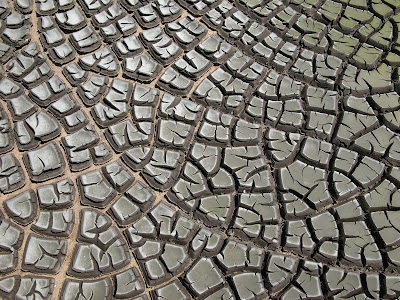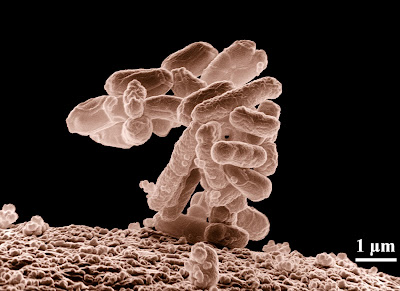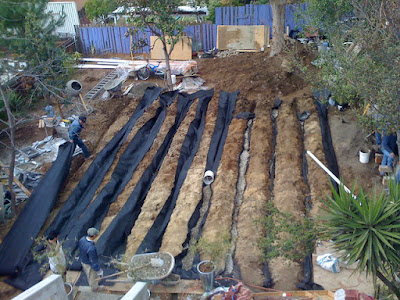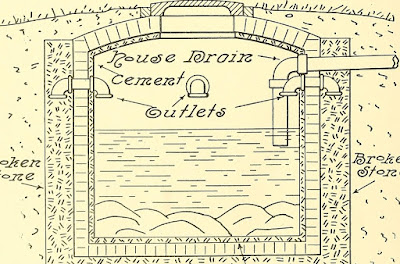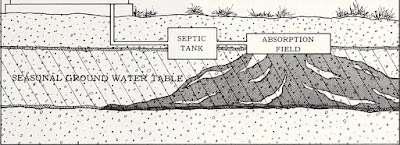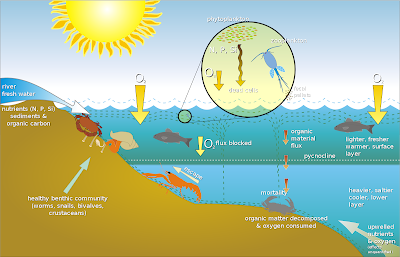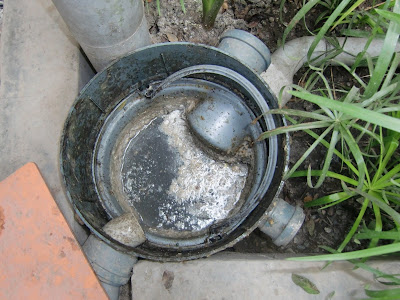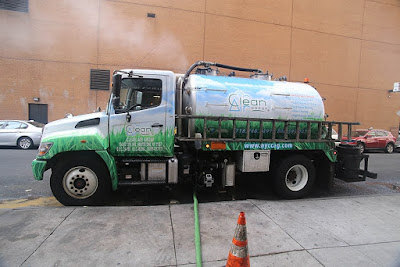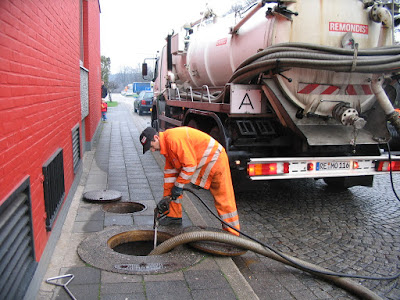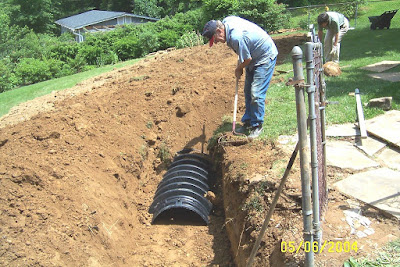Ed's Environmental Blogger: Septic System Mapping - From Your Toilet to Your Leach Fields
Ed's Environmental Blogger: Septic System Mapping - From Your Toilet to Your Leach Fields
https://edwardhorbachukiii.blogspot.com/2020/05/septic-system-mapping-from-your-toilet.html
Septic System Mapping - From Your Toilet to Your Leach Fields
Welcome to our latest post on septic systems. In this article we'll be diving into how the system actually processes waste from toilet to drain field. The process of collecting solid waste in the tank to properly processing the effluent on site is a much simpler process than one would think.
In poor soil areas that lack proper perk rates, or high water tables are in play, the design and process of installing the entire septic system, but especially the leaching or drain field section, is usually much more complicated and therefore more expensive to install.
How Septic Systems Work
If you’re having a new septic system installed at your home or business, you may find it interesting to know that the basic components of a septic system are fairly simple. This basic septic system design has worked for many properties for decades, primarily using gravity to safely remove e-coli bacteria and wastewater back to the ground.
Septic systems are used to treat household wastes when a connection to a municipal city sewage system is not available. These systems are on site because they are intended to treat wastewater where it is actually generated. Anything that goes down the drain, every drop from your shower, and every flush of your toilet flows out to your onsite wastewater system.
Septic System Bacteria and Microorganisms
Typically a septic system consists of a storage tank a network of pipes and billions of microorganisms inside the tank that help process your waste. Most rural homes have what's defined under their local building and health department regulations as a class for septic system that is a septic tank along with a leaching bed or a filtering drain bed, all buried beneath the ground.
Basically the idea is to treat the wastewater, first of all, typically through a septic tank. The septic tank will settle some of the solids out from the effluent and provide a little bit of the pre-treatment phase. After that the effluent is sent to some kind of soil absorption system, sometimes called a leaching bed, where you would further treat the effluent. Finally the effluent will trickle into the end of the drain field trenches. The waste flows to the first compartment of the septic tank where the heavy solids settled and the lighter materials, fat, oils and greases, float to the top as scum.
Baffles and screens keep this scum layer from flowing out to the leaching fields. The scum is removed when the tank is pumped out during regular septic service maintenance. A small amount of fine organic particles may settle in the second compartment of the tank where almost all of what's left breaks down. In onsite wastewater sewage systems built or upgraded after 2005, an effluent filter is required to trap and help decompose any remaining particles before they get to the leaching area.
The leaching bed is made up of a network of perforated polyvinyl chloride drain pipes. These PVC pipes disperse the effluent allowing the filtered liquid to seep into the ground where the bacteria and other organisms continue to break it down and where it is further filtered by washed crushed stone and septic approved sand that surround these pipes and the soil below.
Septic System Components - From House to Drain Fields
Septic systems are only as effective as the sum of their parts. In order to have a properly functioning septic system, you need the right size tank and a healthy drain field, just to name a few. If your drain field is deteriorating from age, is damaged, or needs to be replaced for whatever reason you should contact a septic system inspection technician and or your local health sanitarian for professional advice and to determine how extensive the repairs on your system my need to be, or if an entire renovation of your leaching fields is in order.
Read more on septic systems and the processing of effluent and solid waste by clicking on this hyperlink. https://www.pdffiller.com/5645639-fillable-glenwild-design-guidelines-form Here's an in-depth report in PDF form written by Olivia Jimenez, B.A. on the long-term affects of septic systems when installed in close proximity to lakes, bodies of water and reservoirs in Central Texas.
Check out more great technical information on everything you want to know about septic systems on our blog.
via Ed's Environmental Blogger https://edwardhorbachukiii.blogspot.com/

Posted on May 20th, 2020
Ed's Environmental Blogger: The Trouble with Cesspools and Wastewater Management
Ed's Environmental Blogger: The Trouble with Cesspools and Wastewater Management
https://edwardhorbachukiii.blogspot.com/2020/05/the-trouble-with-cesspools-and.html
The Trouble with Cesspools and Wastewater Management
What is a cesspool?
A cesspool is a shallow system for disposing of sanitary waste. Although structures vary, most cesspools consist of a concrete cylinder with an open bottom or perforated sides. Sanitary waste from toilets, sinks, and washing machines enters the cesspool and percolates out the bottom.
The definition of “large-capacity” may vary from state to state. For example, some states define large-capacity cesspools based on the amount of waste or the volume capacity of the cesspool. Check with your permitting authority for more information. The transformation of cesspools and cesspool design has been very interesting to say the least.
What is a large-capacity cesspool?
The Environmental Protection Agency does not regulate the cesspools of single family homes or those of non-residential facilities that serve fewer than 20 persons per day and dispose of solely sanitary waste. However, these smaller cesspools may be regulated by state and local governmental agencies (e.g., departments of health).
Cesspools of any size that receive waste other than sanitary waste (e.g., from commercial or industrial processes) are industrial wells and are subject to regulations.
Although now illegal, wastewater has often been disposed of in a cesspool or dry well. Construction was similar to a shallow dug well lined with bricks or stone. It was often 6 to 10 feet in diameter and 15 to 20 feet deep. This is why all cesspools now need to be replaced with new septic systems according to your local health department's rules and regulations.
Cesspools and Groundwater Contamination
The depth was less than that of groundwater, thus the name“dry” well. Cesspools are a serious potential source of groundwater contamination and a definite safety hazard.In the past, Kansas law permitted seepage pits following the septic tank for wastewater disposal.
These were holes in the ground filled with stone or other inert material such as broken brick. They were constructed according to state guidelines for size and depth. Construction of seepage pits has been illegal since May 1996, and existing pits must be properly disposed of whenever they are not used or not working.
Read more on this subject at the following website: https://www.epa.gov/uic/large-capacity-cesspools
via Ed's Environmental Blogger https://edwardhorbachukiii.blogspot.com/

Posted on May 18th, 2020
Ed's Environmental Blogger: The Role of Sewage Treatment Plants - Saving the Environment

Posted on May 17th, 2020
Ed's Environmental Blogger: Septic System Basics - What You Need To Know!
Ed's Environmental Blogger: Septic System Basics - What You Need To Know!
https://edwardhorbachukiii.blogspot.com/2020/05/septic-system-basics-what-you-need-to.html
Septic System Basics - What You Need To Know!
Residential septic systems, or subsurface sewage disposal systems, are a small scale sewage treatment system. They are common in areas that have no connection to a municipal sewage system and are the responsibility of the property owner to maintain.
Septic Inspections and Tank Cleaning
Periodically inspecting and pumping out the septic tank can help protect your investment from expensive repair costs, along with environmental issues that can occur from lack of maintenance.
Septic System Design and Construction
Septic systems, if designed, constructed, and maintained properly can provide you with effective treatment of household waste-water for the long-term. If abused or not maintained properly, repairs or replacement can be costly, and the concerns of environmental issues like groundwater contamination can occur, not only affecting your water supply but others around you.
Septic System Failure
The most common reason for early septic system failure is because of improper maintenance. A system that has been poorly maintained and not pumped out on a regular basis, sludge, and solid material build up in the septic tank, then flows into the drainage-field or leach-field field. Once these solids reach the fields clogging of the pipes will start to occur and extensive repairs or replacement may be necessary.
Parts of a Septic System
A typical subsurface disposal system consists of four major parts, the piping from the house, septic tank, drainage or leach-field, and the soil. Soil being the one major part of the system that most homeowners never think of. Microbes in the soil are what digest or remove most of the contaminants from waste-water before it enters the groundwater supply, or aquifer.
Septic Tank
The septic tank is a buried watertight container typically made of concrete, fiberglass, or polyethylene. It holds the wastewater long enough to allow solids to settle out, forming sludge, and oil and grease to float to the surface as scum. It also allows partial decompositions of the solid materials. Compartments and a T-shaped outlet in the septic tank prevent the sludge and scum from leaving the tank and traveling into the leach field/drain-field area. As you will see the septic tank is just one of many components that make up the entire on-site wastewater sewage disposal system.
Leaching Fields or Drain Fields
The wastewater exits the septic tank and is discharged into the leach field/drain field for further treatment by the soil. The partially treated wastewater is pushed along into the leach field/drain field for further treatment every time new wastewater enters the tank.
The most common leach field/drain field consists of a series of trenches containing perforated pipe surrounded by septic rock, or gravel, and covered with mesh and dirt. The effluent entering the leach field/drain field is partially absorbed into the soil and partially evaporated. The leach field/drain field should not be driven on or covered by a driveway, sidewalks, parked vehicles, or patios.
If the leach field/drain field is overloaded with too much liquid, it will flood, causing sewage to flow to the ground surface or create backups in plumbing fixtures and prevent the treatment of all wastewater.
Environmental Concerns
When properly sited and maintained on a routine basis, septic systems are an excellent waste management alternative. However, when not properly sited or maintained, they can cause contamination of surface and groundwater resources, which leads to public health, pollution problems, and damage to the environment.
If you are the owner of a septic system, learn and understand the basics of how a subsurface disposal system works and what steps you need to take to ensure it will be properly maintained. If you let your septic system go or don't have your tank pumped every two to five years, you may be faced with the task of restoring your leach field or replacing your entire system which can be tens of thousands of dollars which is a TON of Money. So please take care of your septic system like it is another child in the family and you'll never have to worry.
For more information on the environment, septic systems, proper maintenance, and grease trap cleaning procedures click here.
via Ed's Environmental Blogger https://edwardhorbachukiii.blogspot.com/

Posted on May 16th, 2020
Ed's Environmental Blogger: Grease Trap Cleaning | Procedures and Maintenance
Ed's Environmental Blogger: Grease Trap Cleaning | Procedures and Maintenance
https://edwardhorbachukiii.blogspot.com/2020/05/grease-trap-cleaning-procedures-and.html
Grease Trap Cleaning | Procedures and Maintenance
Anyone in the restaurant industry can tell you that almost nothing is worse than grease clogging up pipes or backing up a drain. Unfortunately, not many plumbing businesses can specialize in this particular challenge, meaning that getting the job done, and done right the first time, can be a difficult task at best. That's why it's important to make a smart choice when deciding how to do your grease trap cleaning.
When It's Maybe Already Too Late to Clean or Service Your Trap
Fat and oil buildup in restaurant plumbing systems inevitably lead to grease blockages. If it's especially large, a back-up can shut down an establishment for a full two days, leading to significant loss of profit. Grease trap cleaning is a messy business, as sludge can regularly build up to two inches in thickness or more if left unattended.
Plumbing Issues Caused by Grease and Oil Build Up
If you don’t manage your plumbing properly, you might have a clog that causes grease to back up.
Plumbing issues can happen to any commercial kitchen or restaurant. Older systems end up being integrated instead of your grease trap having a separate line and a backup could impact everything.
If the grease trap starts to back up, your entire restaurant could be filled with a terrible odor and send your customers packing. Make sure your entire plumbing system stays free from blockages. Failure to manage your plumbing could lead to an issue and a loss of customer support.
Additional issues such as a foul odor and disposal difficulties can emerge. The cleaning process is intensive; the grease has to be scraped off the sides, lids, and bottom of the grease trap. When choosing someone to clean, make sure they have all the appropriate gear and requisite knowledge to do the job properly. Locate a reputable and licensed grease trap cleaning service in your local area and ask for job references and proof of insurance.
Emergency Grease Trap Repairs
Of course, grease trap cleaning is one of the many problems a restaurant can face. Leaks, sewer odors, and heating fluctuations can strike suddenly, leaving customers unhappy or even shutting down the whole kitchen. As people in the industry know, all it takes is one bad experience, and a customer may never return. With this in mind, it is important to develop a rapport with a plumbing company that will take care of its clients at the drop of a dime.
How Do You Know When Your Restaurant's Grease Trap Needs to be Cleaned or Pumped Out?
5 Signs Your Restaurant's Grease Trap Needs Cleaning
1) When your restaurant's drainage plumbing system is clogged or slow-moving.
2) When grease is 30% or more the total liquid depth in the trap or tank.
3) When there's a foul smell coming from the kitchen, dishwasher, or sinks.
4) When it's simply been too long since your last grease trap cleaning or inspection.
5) When you find grease in unusual places you never imagined.
The Process of Cleaning Out Grease Traps
Grease trap cleaning is the process of removing grease waste and other food particles from the unit. It is possible to clean grease traps on your own, but it can be a very difficult and messy job. Hiring a professional grease trap cleaning service to clean your grease trap is the best course of action.
While grease can be the nastiest thing to clean, it's important to use the proper chemicals and cleaning products to make sure no food is tainted and that all equipment is in top-notch condition. A professional vacuum and grease solvents can help, depending on the situation. Make sure to ask which solution would work best for your business.
New Grease Trap Installations and Replacements
In the fast-paced world of restaurant ownership, having an efficient plumbing system is the backbone of success. The best option, often, is to invest in plumbing equipment so that you aren't stuck with an unexpected disaster.
Most importantly, installing a grease trap that doesn't allow fast build-up causes peace of mind, along with a garbage disposal that doesn't jam up at inconvenient times. Upgrading to efficient fryers and grease disposal systems can help stop problems before they arise.
At worst, grease can combine with soap during an improper clean-up procedure, which could cause an employee or customer to slip and fall. Grease an cooking oil fires, as well, are notoriously hard to extinguish and can destroy any restaurant, along with its reputation.
Innovative Modern Grease Trap Designs are On the Horizon
Double Baffle Passive Grease Traps
Read more on environmental wastewater management and septic tank pumping here.
The best tip for dealing with grease is not to wait until it is an emergency and to start taking preventative steps as soon as possible.
Read more on grease trap cleaning here.
via Ed's Environmental Blogger https://edwardhorbachukiii.blogspot.com/

Posted on May 15th, 2020
Ed's Environmental Blogger: Septic Tank Pumping Procedures and Costs
Ed's Environmental Blogger: Septic Tank Pumping Procedures and Costs
https://edwardhorbachukiii.blogspot.com/2020/05/septic-tank-pumping-procedures-and-costs.html
Septic Tank Pumping Procedures and Costs
For millions of people living in rural settings septic tank pumping is a fact of life. With the closest municipal sewage hookup miles away a properly maintained and working septic system is vitally important and getting it pumped out at regular intervals is a part of that maintenance. In this article, we will look at why getting it pumped out regularly is so important, how it is done, and about how much you can expect to pay for this service.
But before we get into all that let's take a quick look at what a septic system is and how it works. In simplest terms, a septic system is an underground sewage treatment system for homes that do not have access to municipal sewer services. It typically is comprised of four parts; the waste pipe from the house, the septic tank, the drain field, and the soil. All these parts need to in working order but the tank itself is the most important part.
Getting the tank pumped out at regular intervals keeps it working properly and prevents clogs that can cause sewage to back up into the house and create disgusting odors. The primary contributor to septic tank clogs is things that are very biodegradable.
This includes cooking grease and oils that get dumped down the drain and paper products other than toilet paper; paper towels, sanitary napkins and tampons, cigarette butts and cotton balls will all eventually degrade but they tend to get stuck in the inner working of the tank and create clogs that worsen over time.
Another reason to get a septic tank pumped regularly is to check it for damage that can compromise its ability to work in an efficient manner. Once it's pumped out it can be visually inspected for cracks and other damage. If any damage is detected it needs to be repaired to prevent future problems.
The pumping process itself is pretty straight forward. A large truck, sometimes referred to as a "Honey Wagon", with a big tank, suction pump, and large hoses will come to the property and park in the general vicinity of the septic tank. The operator will remove the manhole cover from the tank, lower the suction hoses into it and fire up the pumps, sucking the accumulated waste into the holding tank on the truck.
A good pumping service will also provide a thorough inspection of the septic tank once it is pumped clean. They will inspect the tank, valves, and inlet and outlet ports for damage such as cracks or clogs. They will also inspect the ground around the tank for signs of leaks as well. Any problems should be brought to the homeowner so that they can be dealt with to ensure the proper operation of the entire septic system.
The cost to get a septic tank pumped out varies and will depend on where you live along with a few other factors. Normally it will cost between $125 to $250 or more. The easier the job the less it will cost but there are some circumstances that can cause the price to increase.
The first problem many homeowners run into is knowing exactly where their septic tank is buried. This is particularly true for people who have purchased a home with an existing system. If it is buried and its location isn't readily apparent then your septic pumping service can use a plumbing snake with a radio emitter attached to the end.
The snake is fed through one of the cleanouts in the house and out into the tank. A radio receiver is then used to find the end of the snake which gives the location of the tank.
Another problem is a lack of a septic riser over the lid covering the opening into the tank. If the pumping contractor has to dig down to find the lid this can add to the cost of the service. This is also the perfect opportunity to install a riser to avoid this issue for future pump outs.
The thing to remember when it comes to the cost of pumping a septic tank out; The easier it is to for the pumper truck driver to find and access the tank the lower the overall cost will be. It can be well worth it to address any of these issues the first time you get your tank pumped out as it will keep costs down in the future.
Septic tank pumping is the most important part of maintaining a septic system. A clogged or overfull tank is the primary cause of many septic system problems that can be prevented through regularly scheduled visits by the "Honey Wagon".
Regular pumping is an important part of any maintenance routine that keeps septic tank problems to a minimum. To learn more about septic system problems and how to avoid them please click here.
Article source here.
via Ed's Environmental Blogger https://edwardhorbachukiii.blogspot.com/

Posted on May 15th, 2020
Ed's Environmental Blogger: The Age of Alternative Septic Systems - Possible Cost and Design Benefits
Ed's Environmental Blogger: The Age of Alternative Septic Systems - Possible Cost and Design Benefits
https://edwardhorbachukiii.blogspot.com/2020/05/the-age-of-alternative-septic-systems.html
The Age of Alternative Septic Systems - Possible Cost and Design Benefits
Are you sick and tired of dealing with traditional septic systems? Don't worry, because we have come to provide you with a comprehensive set of information on all new alternatives to septic systems. The uses of septic systems are mainly seen in hunting cabins, cottages, vacation lodges, or in the very sparsely populated rural areas.
Hence, people living in these areas must know about them meticulously. Soil quality, as well as its type, plays a big role in the overall performance of the septic system. Septic systems are quite difficult to maintain in wetter soil. In wetter conditions, the septic technique's ability to treat effluents is shunned to a great extent.
In general, you want sandy soil that is not too coarse, well-drained soil, and naturally undisturbed soils to absorb the effluent. When the soil is too coarse, wastewater passes too quickly to receive sufficient treatment.
A septic system is perfect for treating wastes and is essential for those who are not connected to the municipal or another privately owned system. Proper maintenance of them is essential to maintain healthy conditions for the house as well as the owner of the system.
Therefore, choosing the right septic system for your home is absolutely essential. There are two types of systems; conventional models and their alternates. Soil type and the overall conditions are the key determinants while choosing a septic system. We are giving you in-depth information on the alternatives below.
The most commonly used septic techniques are Gravity and Pressure distribution systems. Gravity is a traditional system that dumps the effluents inside the drain field. The pressure distribution system is also called low-pressure systems.
They are ideal for gravels and in the soil of coarse nature. Other new alternatives to septic systems include Aerobic treatment unit, Mound systems, and Sand filter systems. Aerobic systems are used in areas that require special attention with regard to waste treatment.
Such systems produce cleaner wastewater through the use of oxygen in the treating process. Mound systems are crucial for those areas that have less soil and hence the drain field is a bit elevated. Sand filter systems are also used when little soil is available for treating wastes. It consists of a special soil filtering technique.
Other important new alternatives are Glendon Biofilter, AdvanTex Filter, and Drip Irrigation. Glendon Biofilter consists of a small watertight box that consists of a few layers of sand and gravels. The waste is pumped in through the lower part of the box and then it moves upwards.
Therefore, the top portion consists of treated wastes only. The Advan Tex technique also consists of a watertight box that contains engineered textile materials.
This system is ideal for the treatment of a large amount of effluent water in a comparatively small amount of space. The drip based technique allows the wastewater to be spread over a vast space of the drain field. This system is quite slow, but it provides good results. You can choose any of the aforementioned systems for efficiently processing effluent and enacting onsite wastewater treatment processes.
For more information on (ATUs), read the entire article here.
Check out our main blog on septic system installation and septic repair.
via Ed's Environmental Blogger https://edwardhorbachukiii.blogspot.com/

Posted on May 15th, 2020


